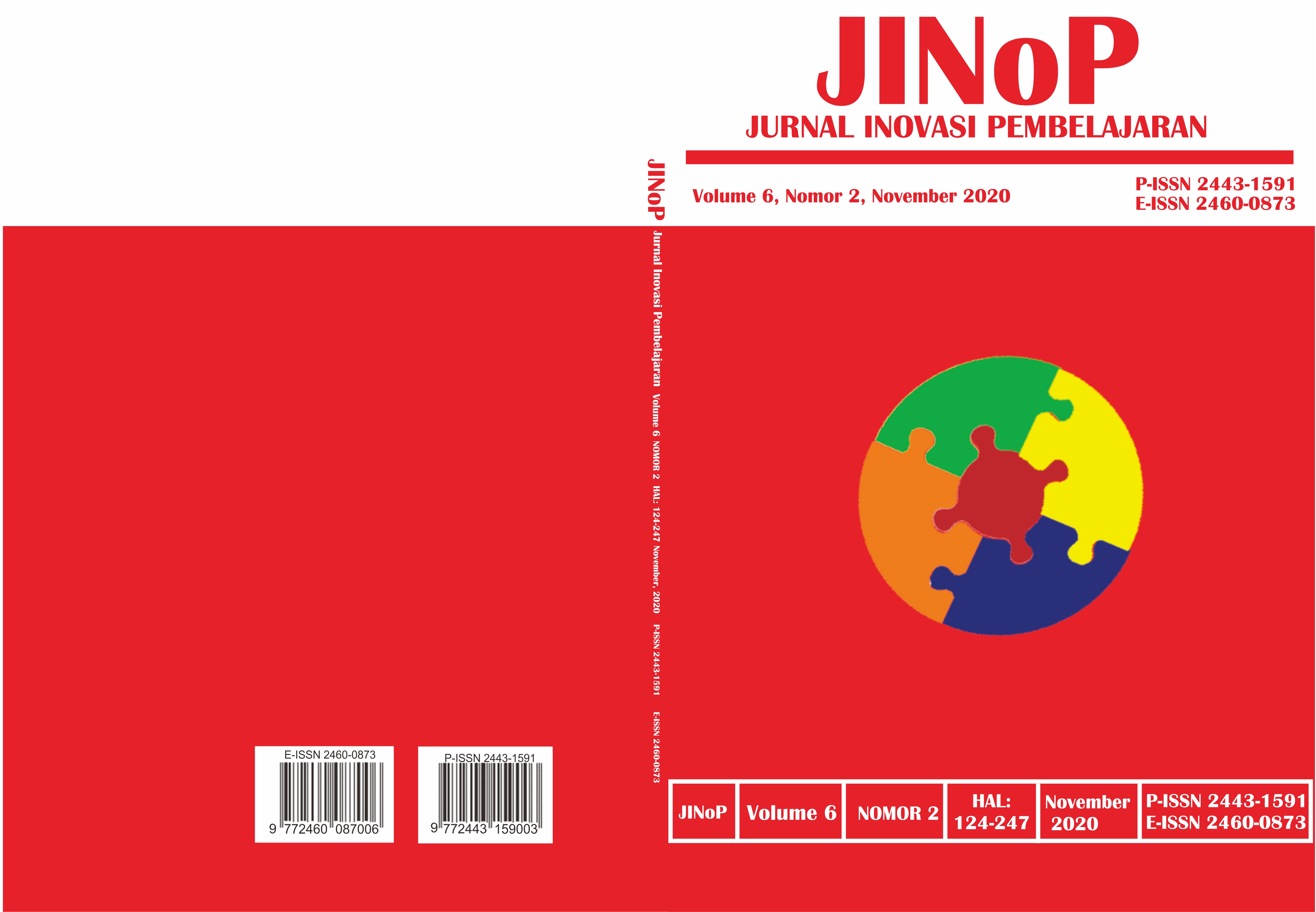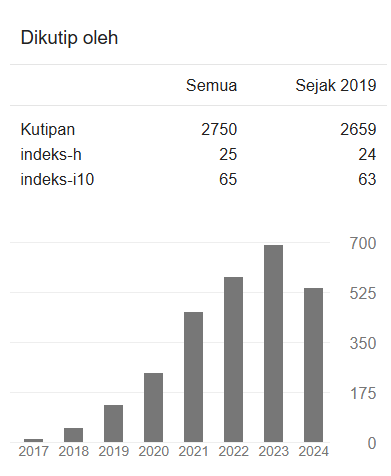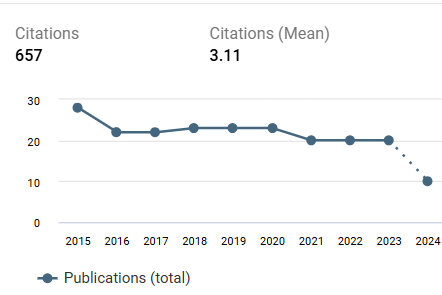Penerapan cooperative learning two stay two stray untuk meningkatan hasil belajar dan keaktifan siswa SMA
DOI:
https://doi.org/10.22219/jinop.v6i2.13461Keywords:
Cooperative learning, hasil belajar, two stay two strayAbstract
Hasil belajar dan keaktifan kelompok siswa pada mata pelajaran Biologi masih tergolong rendah. Hal ini disebabkan pembelajaran belum terpusat pada siswa dan kurang memberikan ruang partisipasi aktif siswa. Penelitian ini bertujuan (1) mendeskripsikan penggunaan TSTS pada pembelajaran Biologi di Kelas XI-IPA, (2) mendeskripsikan keaktifan kelompok dan hasil belajar pada pembelajaran Biologi dengan menggunakan TSTS Biologi di Kelas XI-IPA. Penelitian ini merupakan Penelitian Tindakan Kelas model Kemmis dan McTaggart, terdiri dari 2 siklus dengan tahapan setiap siklus adalah perencanaan, pelaksanaan tindakan, observasi dan refleksi, materi system peredaran darah. Subjek penelitian adalah siswa kelas XI IPA-5 yang berjumlah 32 orang. Teknik pengumpulan data menggunakan obeservasi, tes formatif dan data dianalisis analisis deskriptif kualitatif dan kuantitatif menggunakan persentase. Hasil penelitian menunjukkan bahwa pengguna metode TSTS membuat siswa aktif dalam pembelajaran serta mampu memahami konsep tentang sistem peredaran darah. Peningkatan persentase ketuntasan kelas siklus 1 (71,87%) ke siklus 2 (96,87%) sebesar 25%, persentase rata-rata nilai siswa siklus 1 (78,75%) ke siklus 2 (96,87%) sebesar 18,12% dan persentase rata-rata nilai diskusi kelompok siklus 1 (75,00%) ke siklus 2 (85,93%) sebesar 10,93%. Kesimpulan penelitian menunjukkan bahwa model Cooperative learning two stay two stray dapat meningkatkan hasil belajar dan keaktifan siswa pada materi sistem sirkulasi darah.
Kata kunci: hasil belajar, keaktifan, two stay two stray.
ABSTRACT
The learning outcomes and the activeness of student groups in Biology are considered as a low category. The case happened because learning has not been centered on students and does not provide the opportunity for student active participation. This research aimed: (1) to describe the use of TSTS in Biology learning in Class XI-IPA, (2) to describe group activity and learning outcomes in Biology learning using Biology TSTS in Class XI-IPA. This research employed a Classroom Action Research model of Kemmis and McTaggart, consisting of 2 cycles with the stages of each cycle being planning, implementing the action, observing and reflecting, and circulatory system material. The research used 32 students of class XI IPA-5 as the research subjects and employed data collection techniques by using observation, formative tests. The data were analyzed by using descriptive qualitative and quantitative analysis in percentages. The results showed that the application of the TSTS method resulted in students active in learning and was able to understand the concept of the circulatory system. The increase in the percentage of class completeness in cycle 1 (71.87%) to cycle 2 (96.87%) was 25%, the average percentage of student scores from cycle 1 (78.75%) to cycle 2 (96.87%) was 18,12% and the average percentage value of the discussion groups from cycle 1 (75.00%) to cycle 2 (85.93%) was 10.93%. The conclusion of the research shows that the Two Stay Two Stray Cooperative Learning model can improve learning outcomes and student activity in the blood circulation system material.
Keywords: learning outcomes, activeness, two stay two stray
Downloads
References
Alim Tanri. 2013. Sistem Sirkulasi. http://www.biologi-sel.com/2013/05/sistem-sirkulasi.html. diakses 19 Juli 2016 Fitriyah, N.I., Eling, P. dan Chasnah. 2012. Efektivitas Kooperatif Two Stay Two Stray Terhadap Aktivitas dan Hasil Belajar Siswa. Jurnal Unnes BioEdu 1 (2) 32-37 Hadikusumo dkk. 1996. Pengantar pendidikan. Semarang: IKIP Semarang Press. Hakim. 2011. Penerapan Model Pembelajaran koperatif tipe Pairs Checks Untuk meningkatkan Hasil belajar Fisika Siswa Kelas XA SMA Negeri 7 KendariPada Materi Pokok gerak lurus. http://edisuriawanhakim.blogspot.com/2012/07/ptk-penerapan-model-pembelajaran.hstml. Diakses pada 18 Juli 2016 Komalasari, K. 2011. Pembelajaran Kontekstual Teori dan Aplikasi. Bandung. Refika Aditama Naini, I. 2013. Penerapan Model Pembelajaran Kooperatif Tipe Two Stay Two Stray Disertai LDS Untuk Meningkatkan Hasil Belajar Biologi Siswa Kelas VIII di SMPN 9 Padang Tahun Pelajaran 2012/2013. Skripsi. Program Studi Pendidikan Biologi Sekolah Tinggi Keguruan Dan Ilmu Pendidikan PGRI Sumatera Barat. Nurjanah S. dan Poernomo B. J. 2015. Efektivitas Model Pembelajaran Kooperatif Tipe TTW dengan TSTS Terhadap Hasil Belajar Materi Teori Kinetik Gas. Jurnal PHENOMENON Pendidikan MIPA, Volume 5, Nomor 2. Rofieq A. 2011. Penerapan Pembelajaran Kooperatif Tipe Think-Pair-Share Kelompok Rendah-Tinggi untuk Peningkatan Pemahaman Konsep IPA pada Siswa Berkemampuan Rendah di Kelas V SD Muhammadiyah VIII Malang. Profesi Kependidikan, Direktorat Ketenagaan Dirjen Dikti, Kementerian Pendidikan Nasional RI. Tampubolon S. 2013. Penelitian Tindakan Kelas Sebagai Pengembangan Profesi Pendidik dan Keilmuan. Jakarta. Erlangga Thobroni M. dan Mustofa A. 2011. Belajar dan Pembelajaran Pengembangan Wacana dan Praktik Pembelajaran dalam Pembagunan Nasional. Yogjakarta. Ar-Ruzz Media Santoso, R. E. B. 2011. Model Pembelajaran Kooperatif Tipe Two Stay Two Stray (TSTS). http://www.ras-eko.com/2011/05/model-pembelajaran-kooperatif-tipe-two.html. Diakses 19 Juli 2016. Suyadi. 2013. Strategi Pembelajaran Pendidikan Berkarakter. Yogjakarta. PT. Remaja Rosdakarya. Wardhani, I.Y., Sajidan dan Maridi. 2012. Penerapan Model Pembelajaran Kooperatif Tipe Two Stay Two Stray Disertai Media Audio-Visual Untuk Meningkatkan Kualitas Pembelajaran Biologi Siswa Kelas XI IPA 5 SMA Negeri 7 Surakarta Tahun Pelajaran 2011/2012. Jurnal Pendidikan Biologi 4(1) 40-55.
Downloads
Published
How to Cite
Issue
Section
License
Copyright (c) 2020 Mesah et al

This work is licensed under a Creative Commons Attribution 4.0 International License.
Copyright Notice
Authors who publish with JINoP (Jurnal Inoasi Pembelajaran) agree to the following terms:
- For all articles published in the JINoP (Jurnal Inovasi Pembelajaran), copyright is retained by the authors. Authors give permission to the publisher to announce the work with conditions. When the manuscript is accepted for publication, the authors agree to the automatic transfer of the publishing right to the publisher.
- Authors retain copyright and grant the journal the right of first publication with the work simultaneously licensed under a Creative Commons Attribution 4.0 International License. that allows others to share the work with an acknowledgment of the work's authorship and initial publication in this journal.
- Authors are able to enter into separate, additional contractual arrangements for the non-exclusive distribution of the journal's published version of the work (e.g., post it to an institutional repository or publish it in a book), with an acknowledgment of its initial publication in this journal.
- Authors are permitted and encouraged to post their work online (e.g., in institutional repositories or on their website) prior to and during the submission process, as it can lead to productive exchanges, as well as earlier and greater citation of published work (See The Effect of Open Access).








